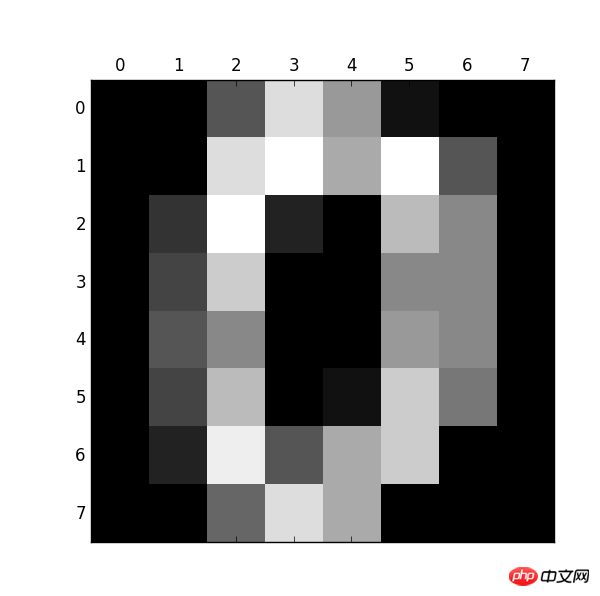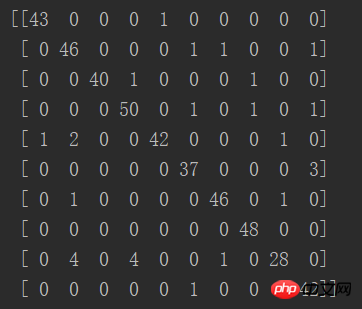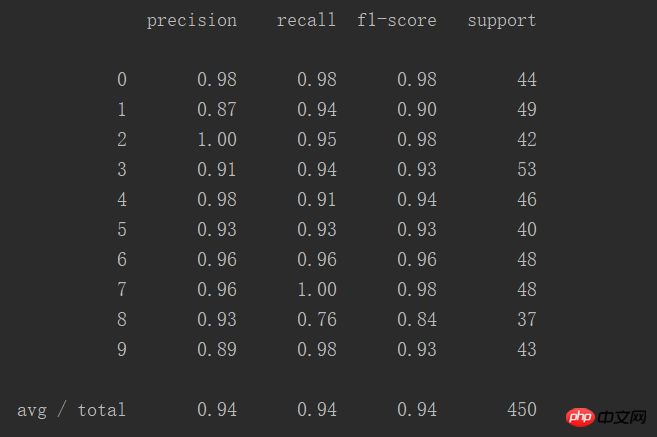 Backend Development
Backend Development
 Python Tutorial
Python Tutorial
 Neural network (BP) algorithm Python implementation and application
Neural network (BP) algorithm Python implementation and application
Neural network (BP) algorithm Python implementation and application
This article mainly introduces the implementation of neural network (BP) algorithm and simple application in Python in detail. It has certain reference value. Interested friends can refer to it.
The examples in this article are shared with everyone. The specific code for implementing neural network algorithms and applications in Python is provided for your reference. The specific content is as follows
First use Python to implement a simple neural network algorithm:
import numpy as np
# 定义tanh函数
def tanh(x):
return np.tanh(x)
# tanh函数的导数
def tan_deriv(x):
return 1.0 - np.tanh(x) * np.tan(x)
# sigmoid函数
def logistic(x):
return 1 / (1 + np.exp(-x))
# sigmoid函数的导数
def logistic_derivative(x):
return logistic(x) * (1 - logistic(x))
class NeuralNetwork:
def __init__(self, layers, activation='tanh'):
"""
神经网络算法构造函数
:param layers: 神经元层数
:param activation: 使用的函数(默认tanh函数)
:return:none
"""
if activation == 'logistic':
self.activation = logistic
self.activation_deriv = logistic_derivative
elif activation == 'tanh':
self.activation = tanh
self.activation_deriv = tan_deriv
# 权重列表
self.weights = []
# 初始化权重(随机)
for i in range(1, len(layers) - 1):
self.weights.append((2 * np.random.random((layers[i - 1] + 1, layers[i] + 1)) - 1) * 0.25)
self.weights.append((2 * np.random.random((layers[i] + 1, layers[i + 1])) - 1) * 0.25)
def fit(self, X, y, learning_rate=0.2, epochs=10000):
"""
训练神经网络
:param X: 数据集(通常是二维)
:param y: 分类标记
:param learning_rate: 学习率(默认0.2)
:param epochs: 训练次数(最大循环次数,默认10000)
:return: none
"""
# 确保数据集是二维的
X = np.atleast_2d(X)
temp = np.ones([X.shape[0], X.shape[1] + 1])
temp[:, 0: -1] = X
X = temp
y = np.array(y)
for k in range(epochs):
# 随机抽取X的一行
i = np.random.randint(X.shape[0])
# 用随机抽取的这一组数据对神经网络更新
a = [X[i]]
# 正向更新
for l in range(len(self.weights)):
a.append(self.activation(np.dot(a[l], self.weights[l])))
error = y[i] - a[-1]
deltas = [error * self.activation_deriv(a[-1])]
# 反向更新
for l in range(len(a) - 2, 0, -1):
deltas.append(deltas[-1].dot(self.weights[l].T) * self.activation_deriv(a[l]))
deltas.reverse()
for i in range(len(self.weights)):
layer = np.atleast_2d(a[i])
delta = np.atleast_2d(deltas[i])
self.weights[i] += learning_rate * layer.T.dot(delta)
def predict(self, x):
x = np.array(x)
temp = np.ones(x.shape[0] + 1)
temp[0:-1] = x
a = temp
for l in range(0, len(self.weights)):
a = self.activation(np.dot(a, self.weights[l]))
return aUse your own defined neural network algorithm to implement some simple functions:
Small case:
10 Close to 1
Second example: Identify numbers in pictures
Import data:
from NN.NeuralNetwork import NeuralNetwork import numpy as np nn = NeuralNetwork([2, 2, 1], 'tanh') temp = [[0, 0], [0, 1], [1, 0], [1, 1]] X = np.array(temp) y = np.array([0, 1, 1, 0]) nn.fit(X, y) for i in temp: print(i, nn.predict(i))
 Number 0
Number 0
from sklearn.datasets import load_digits import pylab as pl digits = load_digits() print(digits.data.shape) pl.gray() pl.matshow(digits.images[0]) pl.show()

This table more intuitively shows the prediction accuracy:
A total of 450 cases, the success rate is 94%
Related recommendations: 
kNN algorithm Python implementation and simple number recognition method

The above is the detailed content of Neural network (BP) algorithm Python implementation and application. For more information, please follow other related articles on the PHP Chinese website!

Hot AI Tools

Undresser.AI Undress
AI-powered app for creating realistic nude photos

AI Clothes Remover
Online AI tool for removing clothes from photos.

Undress AI Tool
Undress images for free

Clothoff.io
AI clothes remover

Video Face Swap
Swap faces in any video effortlessly with our completely free AI face swap tool!

Hot Article

Hot Tools

Notepad++7.3.1
Easy-to-use and free code editor

SublimeText3 Chinese version
Chinese version, very easy to use

Zend Studio 13.0.1
Powerful PHP integrated development environment

Dreamweaver CS6
Visual web development tools

SublimeText3 Mac version
God-level code editing software (SublimeText3)

Hot Topics
 1386
1386
 52
52
 Can visual studio code be used in python
Apr 15, 2025 pm 08:18 PM
Can visual studio code be used in python
Apr 15, 2025 pm 08:18 PM
VS Code can be used to write Python and provides many features that make it an ideal tool for developing Python applications. It allows users to: install Python extensions to get functions such as code completion, syntax highlighting, and debugging. Use the debugger to track code step by step, find and fix errors. Integrate Git for version control. Use code formatting tools to maintain code consistency. Use the Linting tool to spot potential problems ahead of time.
 How to run programs in terminal vscode
Apr 15, 2025 pm 06:42 PM
How to run programs in terminal vscode
Apr 15, 2025 pm 06:42 PM
In VS Code, you can run the program in the terminal through the following steps: Prepare the code and open the integrated terminal to ensure that the code directory is consistent with the terminal working directory. Select the run command according to the programming language (such as Python's python your_file_name.py) to check whether it runs successfully and resolve errors. Use the debugger to improve debugging efficiency.
 Can vs code run in Windows 8
Apr 15, 2025 pm 07:24 PM
Can vs code run in Windows 8
Apr 15, 2025 pm 07:24 PM
VS Code can run on Windows 8, but the experience may not be great. First make sure the system has been updated to the latest patch, then download the VS Code installation package that matches the system architecture and install it as prompted. After installation, be aware that some extensions may be incompatible with Windows 8 and need to look for alternative extensions or use newer Windows systems in a virtual machine. Install the necessary extensions to check whether they work properly. Although VS Code is feasible on Windows 8, it is recommended to upgrade to a newer Windows system for a better development experience and security.
 Is the vscode extension malicious?
Apr 15, 2025 pm 07:57 PM
Is the vscode extension malicious?
Apr 15, 2025 pm 07:57 PM
VS Code extensions pose malicious risks, such as hiding malicious code, exploiting vulnerabilities, and masturbating as legitimate extensions. Methods to identify malicious extensions include: checking publishers, reading comments, checking code, and installing with caution. Security measures also include: security awareness, good habits, regular updates and antivirus software.
 What is vscode What is vscode for?
Apr 15, 2025 pm 06:45 PM
What is vscode What is vscode for?
Apr 15, 2025 pm 06:45 PM
VS Code is the full name Visual Studio Code, which is a free and open source cross-platform code editor and development environment developed by Microsoft. It supports a wide range of programming languages and provides syntax highlighting, code automatic completion, code snippets and smart prompts to improve development efficiency. Through a rich extension ecosystem, users can add extensions to specific needs and languages, such as debuggers, code formatting tools, and Git integrations. VS Code also includes an intuitive debugger that helps quickly find and resolve bugs in your code.
 Python: Automation, Scripting, and Task Management
Apr 16, 2025 am 12:14 AM
Python: Automation, Scripting, and Task Management
Apr 16, 2025 am 12:14 AM
Python excels in automation, scripting, and task management. 1) Automation: File backup is realized through standard libraries such as os and shutil. 2) Script writing: Use the psutil library to monitor system resources. 3) Task management: Use the schedule library to schedule tasks. Python's ease of use and rich library support makes it the preferred tool in these areas.
 Can visual studio code run python
Apr 15, 2025 pm 08:00 PM
Can visual studio code run python
Apr 15, 2025 pm 08:00 PM
VS Code not only can run Python, but also provides powerful functions, including: automatically identifying Python files after installing Python extensions, providing functions such as code completion, syntax highlighting, and debugging. Relying on the installed Python environment, extensions act as bridge connection editing and Python environment. The debugging functions include setting breakpoints, step-by-step debugging, viewing variable values, and improving debugging efficiency. The integrated terminal supports running complex commands such as unit testing and package management. Supports extended configuration and enhances features such as code formatting, analysis and version control.
 Can vs code run python
Apr 15, 2025 pm 08:21 PM
Can vs code run python
Apr 15, 2025 pm 08:21 PM
Yes, VS Code can run Python code. To run Python efficiently in VS Code, complete the following steps: Install the Python interpreter and configure environment variables. Install the Python extension in VS Code. Run Python code in VS Code's terminal via the command line. Use VS Code's debugging capabilities and code formatting to improve development efficiency. Adopt good programming habits and use performance analysis tools to optimize code performance.



